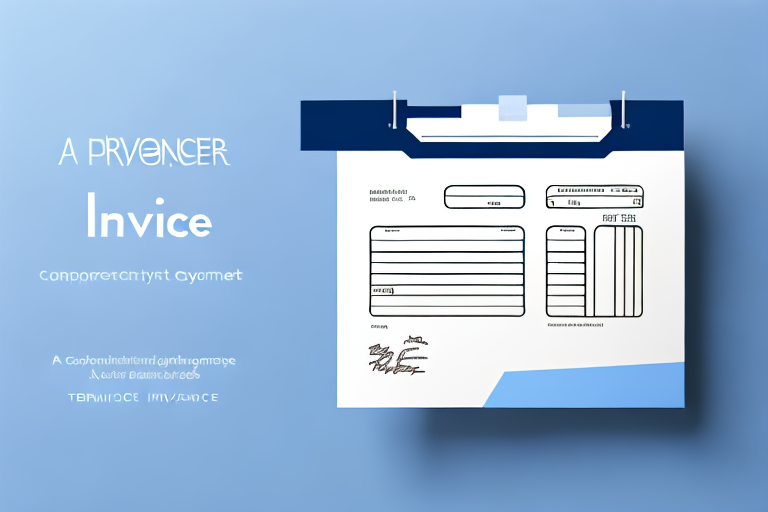Importance of Effective Carrier Invoicing
Effective carrier invoicing is essential for the seamless operation of your business. It ensures timely payments, minimizes errors, and fosters strong relationships with your carriers. According to a Small Business Administration report, efficient invoicing processes can reduce payment delays by up to 30%, significantly improving cash flow management.
Benefits for Business Operations
Accurate invoicing facilitates better financial tracking and forecasting. By maintaining detailed records of shipments and payments, businesses can analyze their logistics costs and identify areas for improvement. This level of financial oversight enables informed decision-making and strategic planning.
Maintaining Carrier Relationships
Prompt and accurate invoicing helps build trust with your carriers. Reliable payments lead to stronger partnerships, potentially resulting in more favorable shipping rates and priority service. A study by American Express highlights that businesses with robust invoicing practices report a 25% increase in carrier satisfaction.
Essential Components of a Carrier Invoice
To create an effective carrier invoice, it's crucial to include all necessary elements that provide clarity and facilitate smooth transactions.
Basic Information
- Carrier Details: Include the carrier's name, address, and contact information.
- Shipment Date: Clearly state the date when the shipment was dispatched.
- Item Descriptions: Provide detailed descriptions and quantities of the goods shipped.
Payment Terms
Outline the terms of payment, including due dates, accepted payment methods, and any applicable discounts or penalties for late payments. Clear payment terms help prevent misunderstandings and ensure timely transactions.
Shipment Details
- Weight and Dimensions: Accurate measurements are essential for calculating freight charges.
- Destination: Specify the delivery location to avoid confusion.
- Mode of Transportation: Indicate whether the shipment was by air, sea, or land.
Best Practices for Creating and Formatting Invoices
Implementing best practices in invoicing can enhance accuracy, efficiency, and professionalism.
Choosing the Right Invoice Template
Select a template that includes all necessary fields and aligns with your brand identity. Business News Daily recommends using customizable templates to ensure all relevant information is captured consistently.
Data Entry Accuracy
Accurate data entry is paramount. Utilize invoicing software to automate data inputs and reduce the risk of human error. Double-check all entries before sending invoices to ensure precision.
Including Relevant Information
Ensure that all pertinent details, such as tracking numbers, purchase order numbers, and special handling instructions, are clearly stated. This comprehensive information aids in the seamless processing of invoices and shipments.
Avoiding Common Mistakes
- Typos and Errors: Carefully proofread invoices to eliminate mistakes.
- Missing Information: Verify that all required fields are completed.
- Incorrect Calculations: Use reliable tools to ensure accurate freight and tax calculations.
Managing and Automating Your Invoicing Process
Efficient management and automation of the invoicing process can save time, reduce errors, and enhance overall productivity.
Tracking and Managing Invoices
Implementing an invoicing system that tracks the status of each invoice—whether it's pending, paid, or overdue—can provide valuable insights and facilitate timely follow-ups. Tools like FreshBooks offer comprehensive tracking features to streamline this process.
Leveraging Technology
Utilize software that integrates with your existing business systems, such as inventory management or ERP solutions. Integration ensures seamless data flow and reduces manual entry, minimizing the potential for errors.
Automating Processes
Automation can handle repetitive tasks like invoice generation, sending reminders, and calculating totals. Platforms like QuickBooks provide automation capabilities that enhance efficiency and accuracy.
Compliance and Handling Invoicing Issues
Adhering to industry regulations and effectively managing disputes are critical aspects of carrier invoicing.
Ensuring Regulatory Compliance
Stay informed about relevant regulations, such as the Federal Highway Administration guidelines, to ensure your invoices meet all legal requirements. Compliance helps prevent disputes and potential penalties.
Handling Disputes or Issues
In the event of a dispute, approach the situation professionally. Maintain clear communication and provide all necessary documentation to support your position. If needed, seek mediation through third-party services to resolve conflicts amicably.
Conclusion
Creating and managing effective carrier invoices is a vital component of successful business operations. By understanding the essential elements, adhering to best practices, and leveraging modern technology, you can enhance accuracy, efficiency, and carrier relationships. Additionally, ensuring compliance with industry regulations and having strategies in place to handle disputes will further streamline your invoicing process. Implement these strategies to achieve optimal invoicing performance and drive your business forward.






















